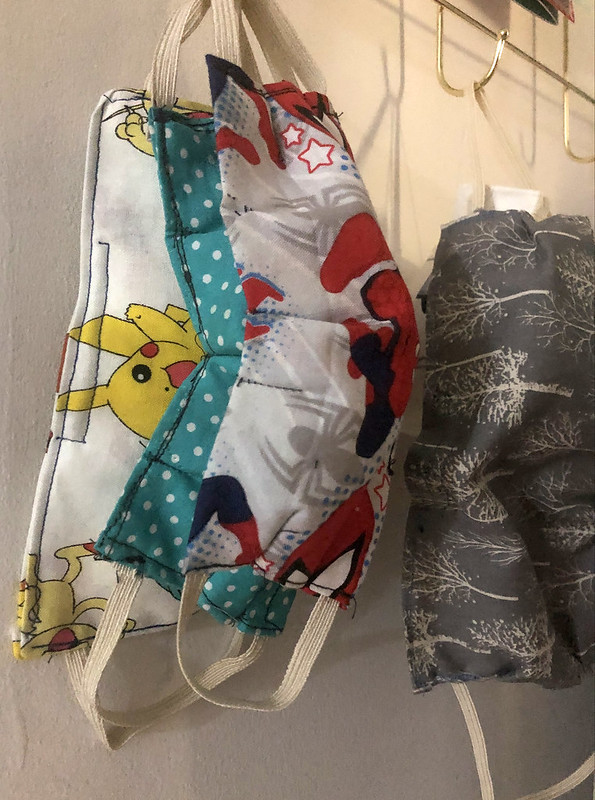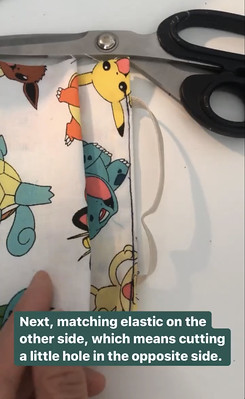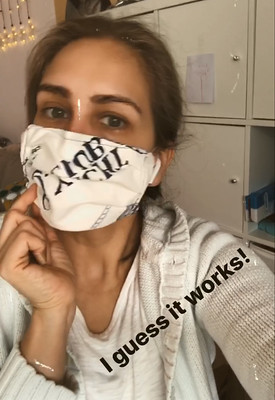I have been sewing cotton face masks for my family’s personal use from fabric and supplies I had already, so I thought it was about time I shared the resources I’ve been using with you as well as some tips of my own. First, I’ll list online resources to tutorials as well as a list of places to purchase a mask online in USA, Ireland, Canada, UK, and beyond.

Online Resources for DIY Masks
Frank and Oak DIY mask tutorial
LA Times list of various designs and tutorials
Sewing Room Channel 10-minute face mask
Where to Buy Masks Online
USA – Candid Art Accessories (@Candid_Art on Instagram)
USA – LA Times List of Los Angeles businesses selling masks
Ireland – Little Button Clothing
Ireland –Bunting by Faye (sold by Green Dot)
Ireland – RashR
Ireland – Sew Fun Studios
Ireland – Irish Country Magazine List of Irish businesses selling masks
Ireland – LULEA
Ireland – Lilly and Clara
Ireland – changex.org sends you a package of supplies to make masks, some of which you keep and the rest are sent back for donation to Direct Provision Centre.
Canada – Frank and Oak sells kits and premade masks
Canada – Roots
Canada – Frank Lyman Montreal
UK – Mayamiko
UK – Boobalou
UK – Fab Frocks Boutique
Everywhere – Etsy
How I Sew Face Masks
I started by evaluating the supplies I had so I could decide what design would work. I have elastic, woven cotton, and pipe cleaners, as well as a sewing machine and ample thread so I had many options. I made three styles: Side Pleat Mask, Filter-holding Mask, and Mask with Darts. All started with pre-washed cotton fabric. Most used pieces of fabric 6″ x 16″ which I then folded over.
Mask with Darts
This is the style mask I made most. I created one for each of my two sons, plus a spare for either to use. I also made one for me in this style. I found the darts to work better for the kids because they don’t shift like pleats, which may tickle their faces and make them want to touch their face to adjust the mask.
Folded the fabric and am partially sewing it to secure the sides and slip in the elastic on the edges.
I’m not picky about thread color matching the fabric. Whatever is in the machine will do just fine. I sewed the piece of fabric into a loop, leaving the top and bottom edge open. I’ll then turn it right-side-out and slip the elastic into those spots to sew and secure the ear loops.
On the other side, I cut a hole into the folded side of the fabric to slip the elastic in then will secure it with stitching.
Sewing those into place now. Careful there isn’t a twist in the elastic which would rub against the backs of the ears when being worn.
It’s time to decide which it the top and which is the bottom. Then slip in and secure with stitches a length of pipe cleaner for the nose bridge.
I fold the bottom hem upwards and sew darts to cup the chin. This keeps the mask securely in place. My sewing machine was in the same room as family movie night, so the lighting changed a bit for this photo.
Side darts going into place to limit gaps on the cheeks.
The final results work well and are machine washable.
Side Pleat Mask
I used the Sewing Room Channel 10-minute face mask tutorial to make two masks for my husband using this method. Sadly, I took no photos.
Filter-holding Mask
I created a simple slip-on cover to use a disposable paper mask as a filter. It worked well, but would have been better had I made it wider and used lighter weight fabric because the elastic on the disposable mask was very stretchy and the mask sagged.
Which mask tutorial did you find useful for your own mask making? Or did you find a good source to buy masks online? Either way, I hope you are safe and well.





















I used the video from Irish Crafters on fb and a 30cm diameter cardboard template made from the box DD2’s swingball came in. Scrap fabric and elastic from Amazon.